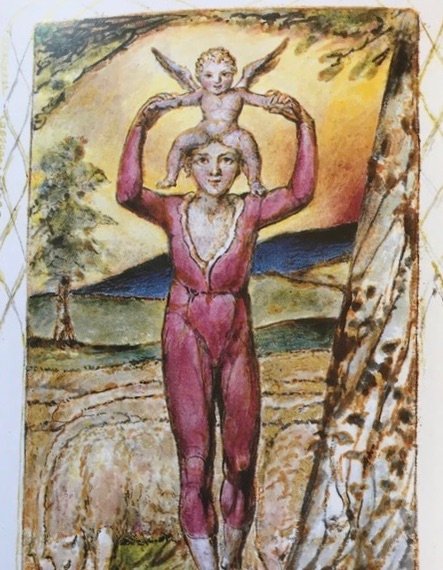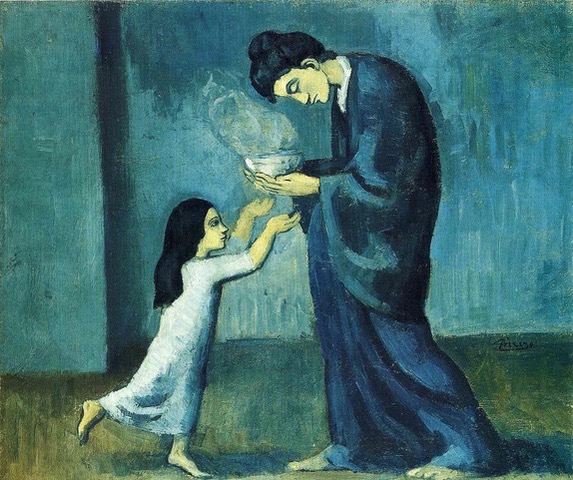"Das Märchen ist der Prüfstein der Poesie ... alles Poetische muss wie ein Märchen sein. Der Dichter verehrt den Zufall."
- Novalis
"Das Märchen ist mächtiger als die Philosophie".
- Bruce Donehower, nach Novalis
Dieses 20-minütige Vortragsvideo stammt von einer Sitzung der Sektion für Literarische Kunst und Geisteswissenschaften am 20. November 2020. Am Ende des Beitrags finden Sie Aufführungsvideos des Märchens "Hyazinthe und Rosenknospe" von Novalis auf Englisch und Deutsch.
Novalis schätzte die Märchen sehr. Vieles von dem, was Novalis über die geistige Bedeutung der Märchen sagt, wird von Rudolf Steiner hundert oder mehr Jahre nach Novalis' Tod wieder aufgegriffen. Das ist ganz im Sinne der hohen Bedeutung, die Rudolf Steiner Novalis - zum Beispiel in der Letzten Ansprache - beimisst.
Eine der eindrücklichsten Aussagen Rudolf Steiners über das Märchen ist, dass "Märchen können helfen, Krankheiten zu bekämpfen." Diese Aussage finden wir in dem Buch Die Welt der Märchendie in der Rubrik Bücher auf dieser Website zu finden ist.
Englische Version:
Hyazinthe und Rosenknospe von Novalis
Deutsche Version:
Hyazinthe und Rosenblütchen von Novalis
"In einem echten Märchen muss alles wundersam, geheimnisvoll und miteinander verbunden sein; alles muss lebendig sein, jedes auf seine eigene Weise. Die ganze Natur muss auf wundersame Weise mit der ganzen Welt des Geistes verschmolzen sein. Im Märchen werden die Bande der Anarchie, der Gesetzlosigkeit, der Freiheit, des natürlichen Zustands der Natur in der Welt spürbar. Die Welt des Märchens ist eine Welt, die einer Welt der rationalen Wahrheit durch und durch entgegengesetzt ist, und gerade deshalb ist sie ein so gründliches Analogon zu einer Welt der rationalen Wahrheit, wie das Chaos ein Analogon zur fertigen Schöpfung ist."
- Novalis

"Armes Kind, das noch nicht geliebt hat!"
Das Bild oben ist von William Blake. Betrachten Sie es für einen Moment. (Blake und Novalis haben viel gemeinsam - sie waren Zeitgenossen.) Betrachten Sie dieses Bild und stellen Sie sich vor, dass Sie ein Kind wie dieses auf Ihren Schultern tragen. Ist das Kind glücklich? Traurig? Ängstlich? Beunruhigt? Wütend? Ist es krank? Hat das Kind einen Anfall, oder hat es vielleicht Angst vor der Welt?
Ich war schon immer fasziniert von einer Bemerkung von Novalis in dem Novalis sagte, dass Goethes Fairy Tale [Die grüne Schlange und die schöne Lilie] ist "Erzählte Oper." Nicht die Oper in ihrer totalen musikalischen Form, sondern die erzählte Oper, sagt Novalis. Gesprochene Oper. Wenn ich meinen Musikerfreunden erzähle, dass ich in Fair Oaks Märchenvideos mit Sprechkünstlern mache - kleine "erzählte Opern" -, lächeln sie normalerweise und sagen: "Oh gut! Die werde ich meinen Enkelkindern schenken". Aber diese kleinen erzählten Opern sind für Erwachsene! Wie Novalis und Rudolf Steiner betonten, muss jeder Erwachsene ein echtes Märchen auf die richtige Art und Weise hören! Jeder Erwachsene hat ein Kind in sich, wie Steiner sagte - ein Kind, das das wahre Märchen hören muss, immer wieder. Aber vielleicht erlaubt der Erwachsene dem Kind nicht, solche Geschichten zu hören. Oh je! Wie traurig! Der Erwachsene würde lieber die tief verborgenen Bedeutungen im Märchen erklären und weise Dinge sagen oder Lektionen erteilen - aber das Kind will nur eine erzählte Oper genießen.
"Göthes Märchen ist eine erzählte Oper."
- Novalis
"Es ist ein großer Unterschied, ob man als Kind mit Märchen aufgewachsen ist oder nicht. Das Seelenbewegende der Märchenbilder wird erst später deutlich. Wenn man keine Märchen bekommen hat, zeigt sich das in späteren Jahren in Lebensüberdruss, in Langeweile. Ja, es kommt sogar körperlich zum Ausdruck: Märchen können helfen, Krankheiten zu bekämpfen. Was mit Hilfe von Märchen nach und nach aufgenommen wird, zeigt sich später als Lebensfreude, als Sinn des Lebens - es zeigt sich in der Fähigkeit, das Leben zu bewältigen, bis ins hohe Alter. Kinder müssen die Kraft der Märchen schon in jungen Jahren erfahren, wenn sie noch dazu in der Lage sind. Wer nicht fähig ist, mit Vorstellungen zu leben, die für die physische Ebene keine Realität haben, "stirbt" für die geistige Welt."
- Rudolf Steiner

